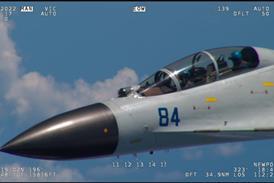GUY NORRIS / LOS ANGELES
Manufacturer says customers have signed up for five initial applications of T2CAS
Aviation Communication & Surveillance Systems (ACSS), the Phoenix-based safety avionics specialist, is bench testing its newly launched T2CAS. The system, which combines a traffic alert and collision avoidance system (TCAS) with a terrain awareness warning system (TAWS), is due to commence flight tests in July.
ACSS, a joint L-3 Communications and Thales company, says customers have signed up for five initial applications already. The first batch of types includes two business jets and three airliner applications, the latter thought to include the McDonnell Douglas DC-9 and Boeing MD-80. ACSS intends to test fly the system on a Raytheon Beech King Air 200 and hopes for certification around year-end.
ACSS director of business aviation programmes Larry Clark says a key part of the development strategy is "trying to minimise the number of configurations without limiting applications. To do that we are putting a personality module on the [equipment] rack that tells the box what kind of aircraft it is mounted to."
Unlike previous TAWS, the combined unit is performance-based. "Others rely on a 6° climb angle, no matter what, whereas this will change the alert status. It is programmed to know if you are in a single or twin-engined aircraft, and if you are at the start of a flight [for instance heavy with fuel], or near the end," says Clark.
"As soon as you're going to clear the mountain we stop the call-out. You don't have to go all the way to stall and full power." Finding acceptance for ACSS is also a challenge, says Clark, who adds: "The incumbent is strong - we have no track record and nothing certificated yet."
ACSS produces the TCAS 2000 and TCAS 1500, as well as a set of Mode S transponders, all of which were first developed under the original Honeywell brand name.
The T2CAS is being developed for new build and retrofit. TAWS systems are mandated for new-build aircraft from the end of March, and for large sections of the US-registered Part 91 and 135 fleets by 2005.
The system will also be offered with a navigation grade output option to enable older aircraft to use satellite navigation as a prime means of guidance.
Source: Flight International























